In the 1890s, working in the service of the public was considered a thankless task by the local newspaper, the Cumberland Argus, and there was no role more unrewarding than that of the Inspector of Nuisances. Offering its sympathies to the newly appointed officer Mr Artlett, the newspaper commented on the difficulties of the task ahead of him being given a hard time by both the public and the elected aldermen.
The Municipalities Act of 1867 enabled local councils to “to abate and remove all nuisances within the Municipality” and “compel such nuisances to be abated and removed by the owners or occupiers from the premises where the nuisance shall exist.” The definition of a nuisance covered anything that could be considered “injurious to health,” including the discharges and odours emanating from boiling-down establishments and tanneries, drains and gutters, animal carcasses, cesspools and sanitary waste.
The Borough of Parramatta inaugurated in 1861 and a range of positions were created to carry out the business of the new Council. This included the role of the Inspector of Nuisances. The first Inspector to hold this title was George Booth who earned a salary of £10 per annum, serving from 24 March 1868 until 26 March 1872. The importance of the job was not reflected in the salary. In comparison, the Town Clerk during this period earned a comfortable £200 per annum.
Yet, the role was an important one during a period in history when many citizens had poor sanitary habits. There was inadequate disposal of waste from factories and businesses, and animals and people lived side by side within the town. The sights and smells of Parramatta at this time may only be imagined!
Booth encountered many difficulties in carrying out his work, partly due to his lack of power to impose significant fines or other punitive measures. When a man who was ordered to remove a dead dog at his premises in Macquarie Street flatly refused, there was little the Inspector could do to compel him otherwise.
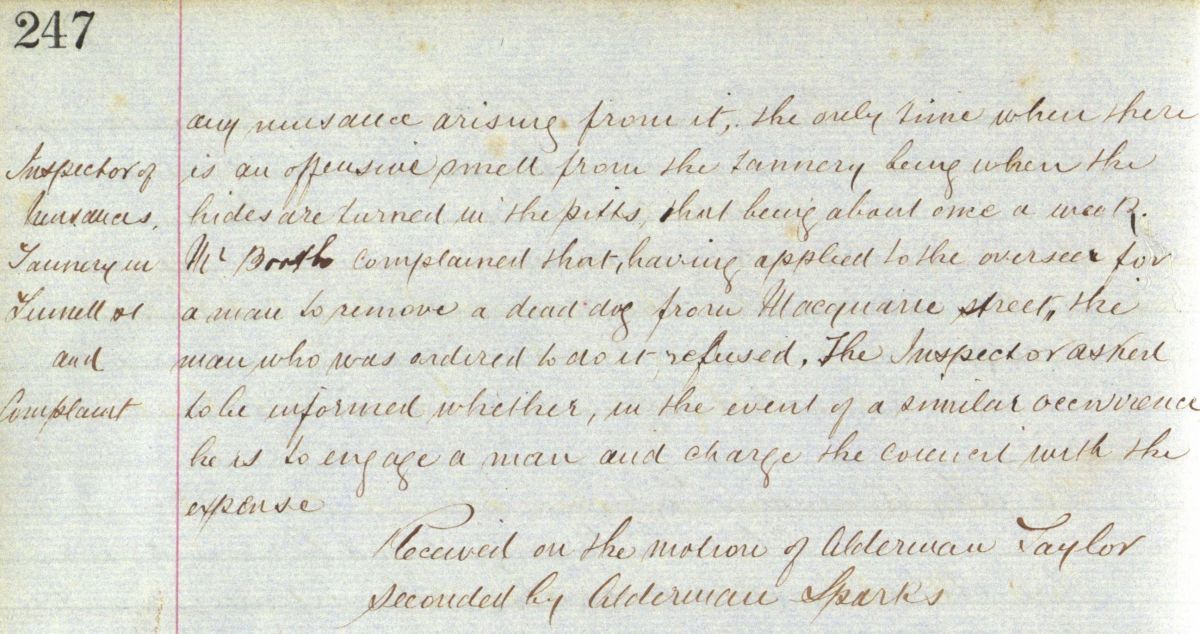
George Booth submitted his letter of resignation at the council meeting of the 26 March 1872. The Council then had to find another responsible person to carry out these important duties.
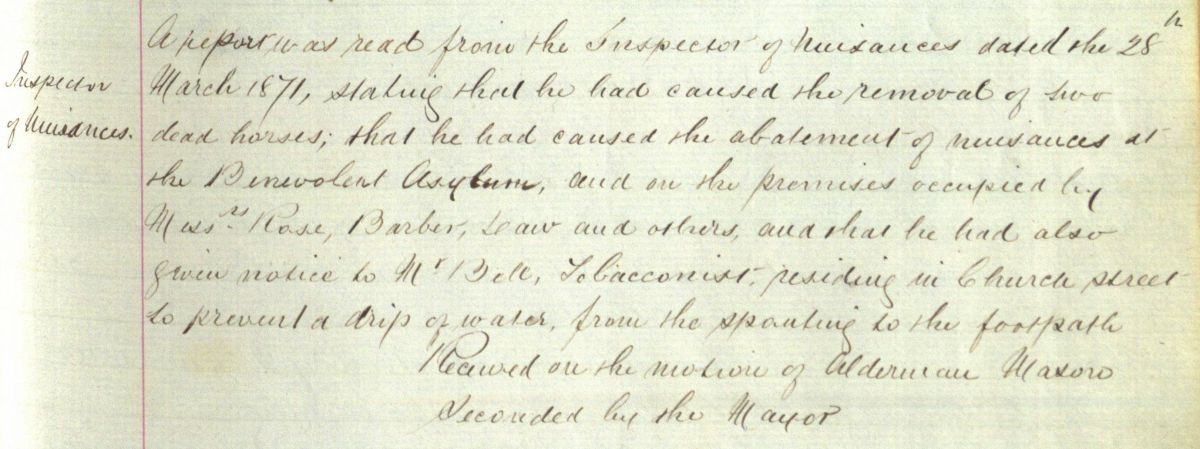
This Council Minute is an account of Mr Booth detailing his activities over the past period, including the removal of two dead horses and "the abatement of nuisances at the benevolent asylum."
After the resignation of Booth, Council considered it would be a good idea to appoint a member of the police force to the position, possibly to give the position more clout. Accordingly, two police officers, Senior-Sergeant John Kelly and Constable Michael W O’Connor were appointed to the role. This was likely undertaken in addition to their policing duties.
Kelly undertook his duties with great diligence and care. In his report to Council dated 26 May 1873, Kelly submitted that a drain across Church Street which had an opening in front of Mann’s Butchers’ Shop and running between two houses occupied by Messrs Thomas and George Hill was in a very filthy state. “There is an accumulation of offensive matter from this drain in Mr Hills’ yard close to Church Street.” Kelly was very concerned that the illnesses suffered by members of both families may be attributed to the “effluvium from the drain.” Kelly stressed the seriousness of this problem, stating that “a child from each family had died” and judged that the drain in question was the primary cause of the children’s illness.

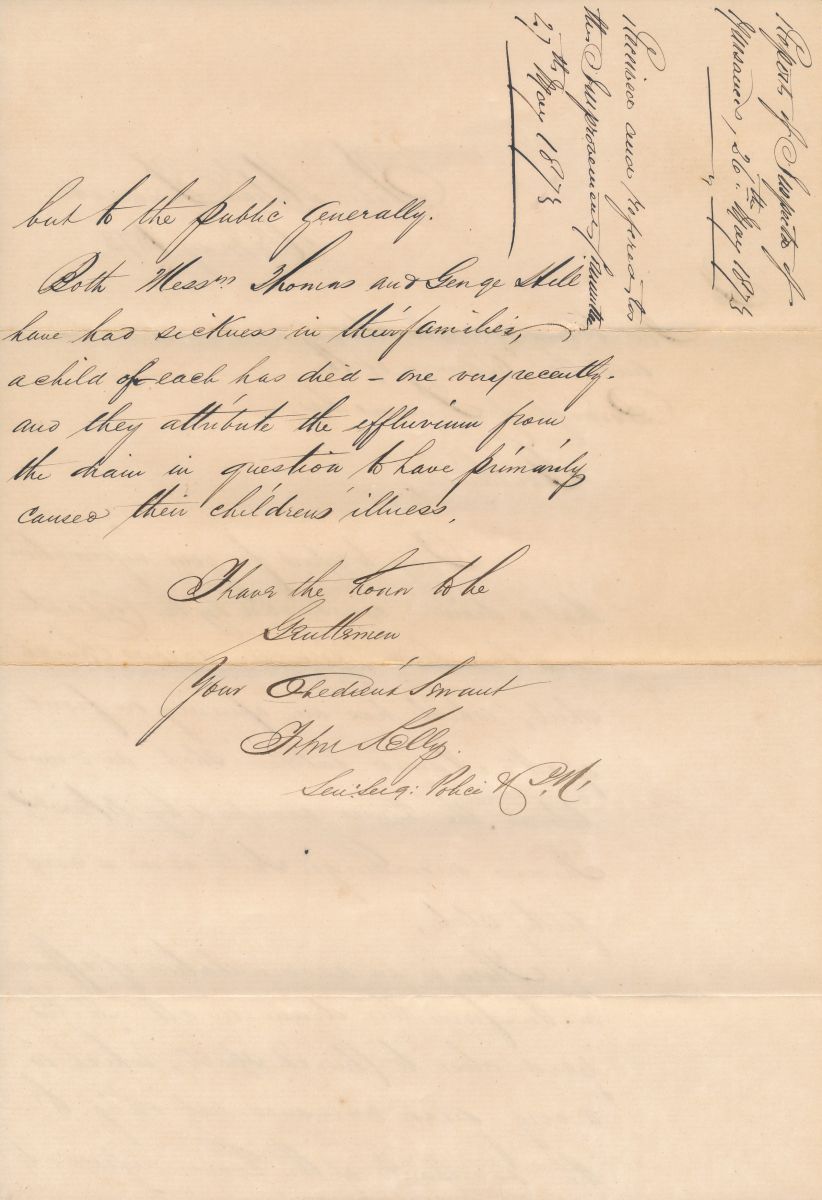
Kelly continued in the position until 1874 and was replaced by J Bremner, assisted by Acting Sergeant Michael O’Connor. From this period onwards members of the police force were no longer used for these duties.
Ralph Mood was appointed to the position of Inspector of Nuisances in December 1875 and served until the appointment of Patrick Hayes in 1877. He then served as an Assistant Council Clerk until his retirement on 16 January 1882. Prior to his career in Council, Mood was employed by Messrs Byrnes at the Australian Flour Mills. He passed away in January 1886 aged 85 years. His obituary states that he was “noted for his honesty and integrity of purpose” - certainly character traits necessary to carry out the duties of the Inspector.
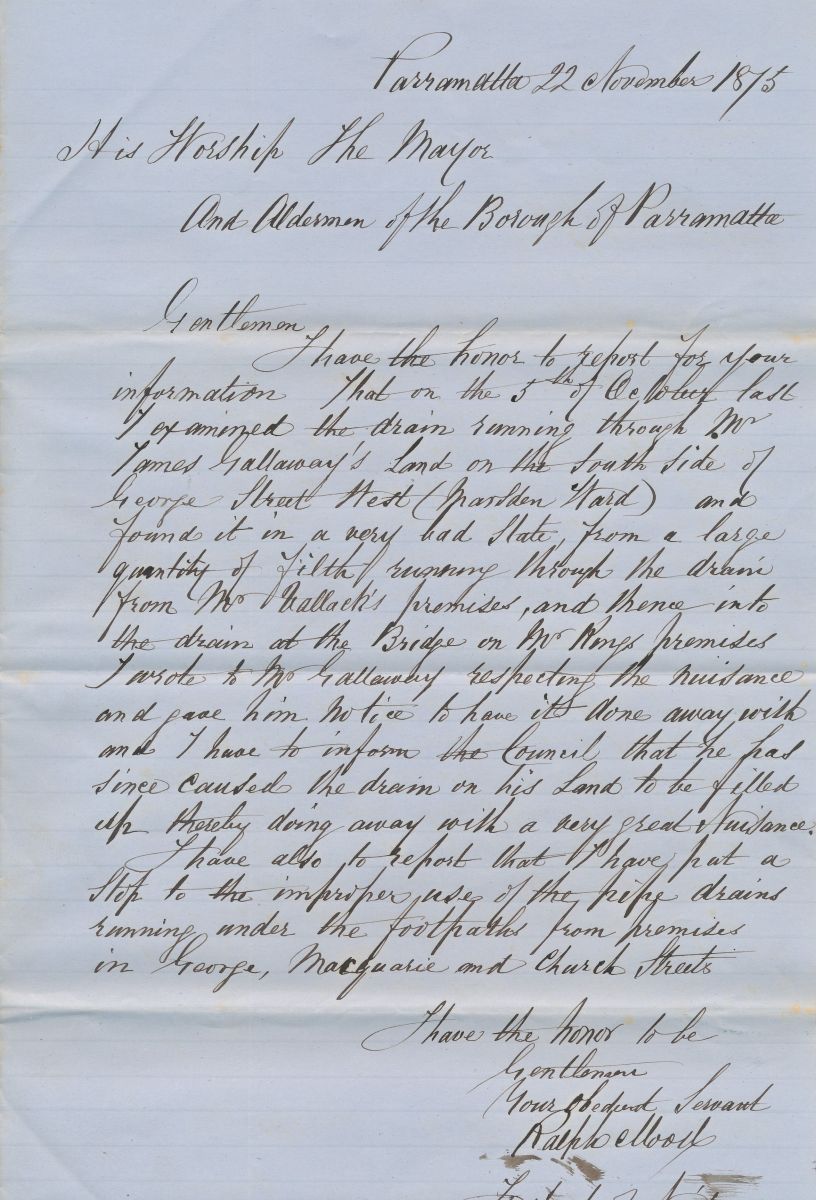
Occasionally, the Inspector of Nuisances was able to report to Council on a very successful outcome of his duties. In November 1875, Mood was happy to note that the offensive drain running through Mr Galloway’s land which was filled with filth emanating from Mr Vallack’s premises had been filled in and therefore a very great nuisance had been “done away with.” However, the report noted several other drains in the town were still causing public nuisances.
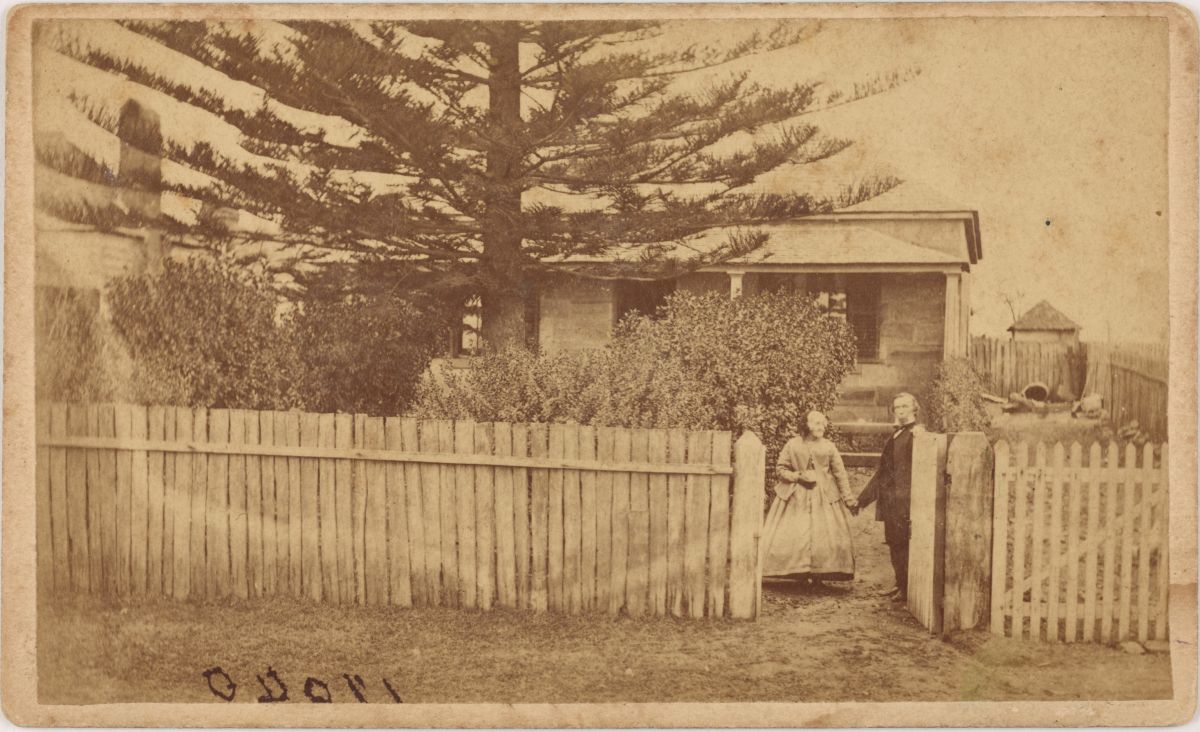
The Nuisances Prevention Act of 1875 provided a solid legal framework whereby a summons could be issued for non-compliance with the directions of the Inspector.
From 1872-1874, the Inspector of Nuisances was appointed from the local police contingent and therefore operated from an office in the Parramatta Police Station. With the opening of Parramatta Town Hall in 1881, and in keeping with the importance of the position, an office was designated for the Inspector. Patrick Hayes was the first Inspector to work from the office at Parramatta Town Hall.
In January 1884, Patrick Hayes extended his regular duties to attempt to disperse a group of “larrikins” in Parramatta. Hayes ended up the target of a large stone thrown by one of the “ruffians”. The action of the police was needed to move on the gathering. The newspaper commented that larrikinism was on the rise in Parramatta, and that more police were needed to curb this type of behaviour in Parramatta.
The unencumbered passage of pedestrian traffic along the footpaths of the district were another part of the Inspector’s remit. In a practice which still continues today, storekeepers displayed their goods for sale on the outside of the premises hoping to catch the eye (and the pockets) of the passers-by. Owners were given forty-eight hours to remove their goods before a summons was issued by the court.
Hayes was a long serving and valuable employee for 25 years spending the last 12 months of service on leave of absence with full pay due to ill health. During this period the duties were performed by the Overseer of Works, Mr Edward James Love. Reportedly, Hayes did return briefly to the role but again became ill and passed away on the 12 January 1890, aged 80 years.
His obituary published in the Cumberland Argus on the 18 January 1890 outlined his life in Parramatta which commenced in the 1830s with his appointment to the local business of Messrs Tingham and Walker, later founding the company which was later to become Vallack’s Brewery. From the early years of the Borough of Parramatta, Hayes conducted valuations for the rateable properties within the Parish of St John and the Parish of Field of Mars. From 1863, he held the position of Inspector of Slaughterhouses and of Cattle and Sheep Intended for Slaughter which included the "identification of noxious effluent and odours emanating from insanitary premises."
Perhaps a reflection of the economic circumstances of the population at the time, there was a large number of applicants for the position of Inspector of Nuisances. By this time, the role had expanded to include the Inspector of Hackney Carriages and the officer had the power to impound stray cattle. The term Hackney Carriage was applied to horse-drawn vehicles that were available for hire before the advent of motor-driven taxis.
To match the changes to the responsibilities of the Inspector, the salary had increased to £200 per annum. Mr Love was endorsed by Council to temporarily fill the role until a permanent appointment could be made.
The Cumberland Mercury stressed the importance of the role stating that the Inspector must carry out his duties “with the utmost independence, fearing the influence of no man, or even alderman, caring for nought but to carry out his duties, be they pleasant or unpleasant in an effective manner”. This strength of character was vital when the inspector found that some offenders were also elected aldermen of the town. The inspector must also “pay the most careful attention to the sanitary condition of the City” if it was to resist the “attacks of the invidious disease now devastating Europe” referring to cases of the Bubonic Plaque which had been reported on the continent.
Although Mr Love may have preferred to continue in the role, in May 1890, the position was awarded to Mr Francis Arthur Artlett. There was much discussion in the local newspaper at the time considering the pros and cons of the merits of his appointment. It was conceded that while others may have more experience, Artlett had what was primarily required “energy, tempered with discretion and sufficient independence of character to withstand the influence of any particular party, cabal or individual.”
During some periods, especially if it was deemed the workload warranted it, an assistant to the Inspector was appointed. Often the name of the assistant was not noted, however in 1891 a Mr Garlick served in this role.
The jurisdiction of the role grew ever wider over time and by 1891 encompassed the removal of noxious weeds, inspection of dairy premises, the clearing of obstacles from footpaths, checking on the sanitary practices of butcher shops and slaughterhouses and in fact anything that could, by any stretch of the imagination, constitute a nuisance to the citizens of Parramatta.
It seems that Francis Artlett was somewhat of an inventor. In August 1894, the Cumberland Mercury reported that he had applied for a patent regarding an “improved air-tight lid for pans and other vessels and means of securing same.” Closure of the pan was effected by means of a spring clip pressing the lid firmly downwards onto a rubber ring which sealed the pan against spillage of the obnoxious contents. It is not known whether his design was ever manufactured.
Frequently, the task of the Inspector involved troublesome householders with “earth closets” or “nightsoil pans” which were common types of sanitary facilities before the days of flushing toilets, septic tanks or reticulated sewerage systems. The nightsoil pans were located in the little backyard structure commonly known as the “backyard dunny” or “outhouse” which were always sited at the rear of the block of land and often along a back laneway. The pans were emptied regularly by the nightsoil officer. Householders who were using a non-standard receptacle were often advised to purchase a regulation pan.
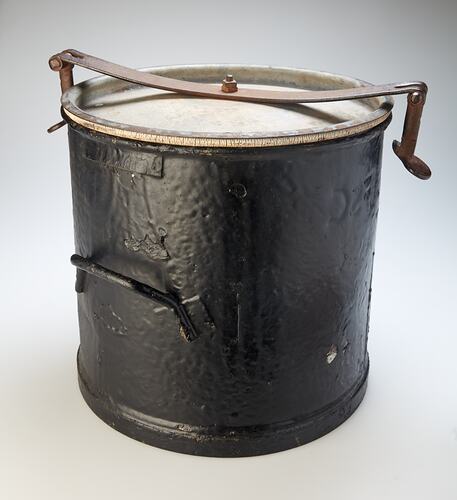
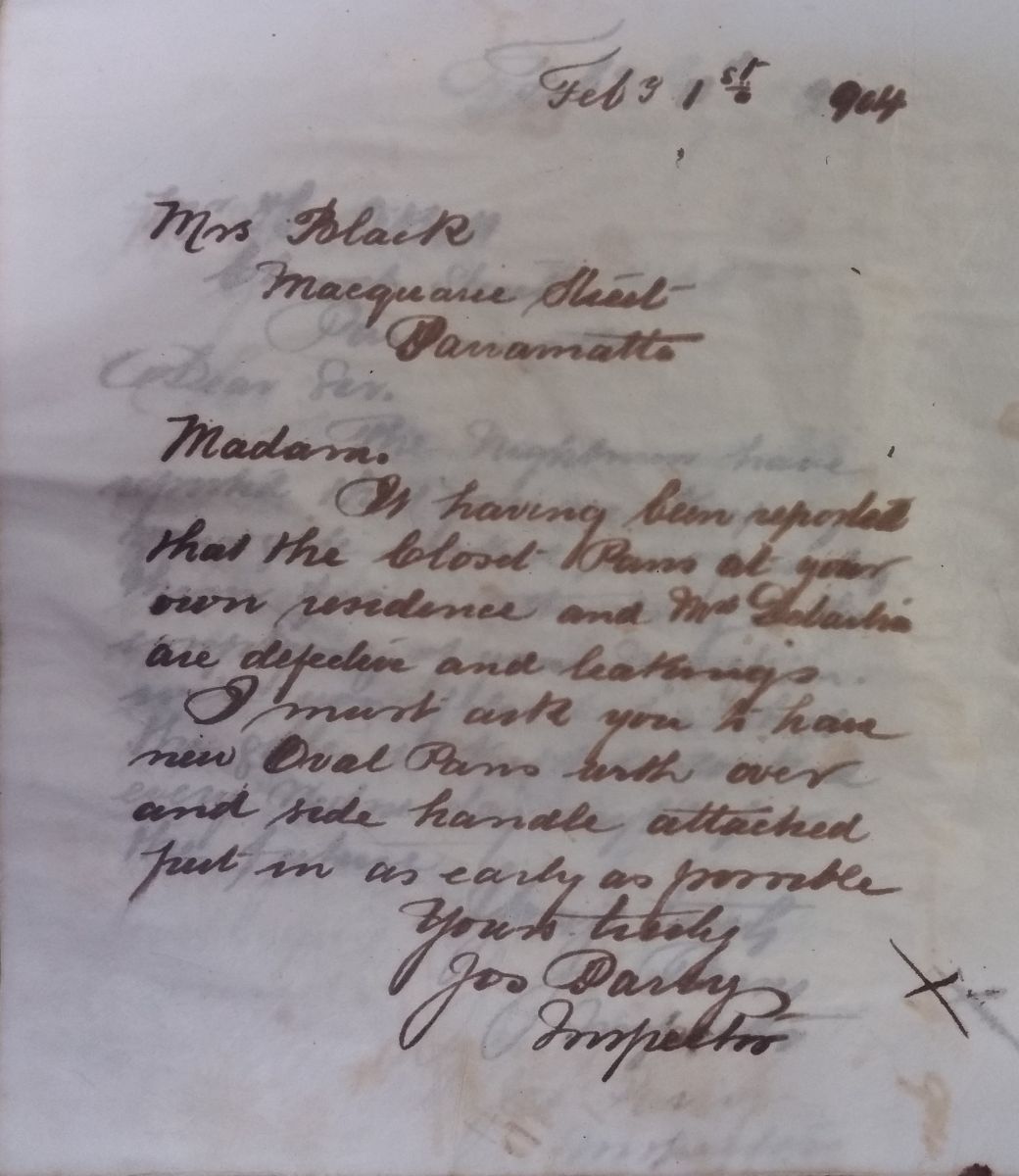
The earth closet system involved the toilet waste dropping into a pit located in the subsoil under the can. These pits became a problem when the available space was used or because of leakage of the effluent into the surrounding soil sometimes due to the shallowness of the pit.
The Inspector of Nuisances sometimes found that nightsoil pans were inaccessible for collection due to a gate being locked or that the householder had been emptying the pans directly onto the soil in the backyard of the premises. In September 1897, in response to a neighbour’s complaint, William Bardsley, the Assistant Inspector “took action by waiting on the premises until 3am, catching the culprit redhanded.” A summons was issued to the occupier who was found to have speedily left the district before it could be served!
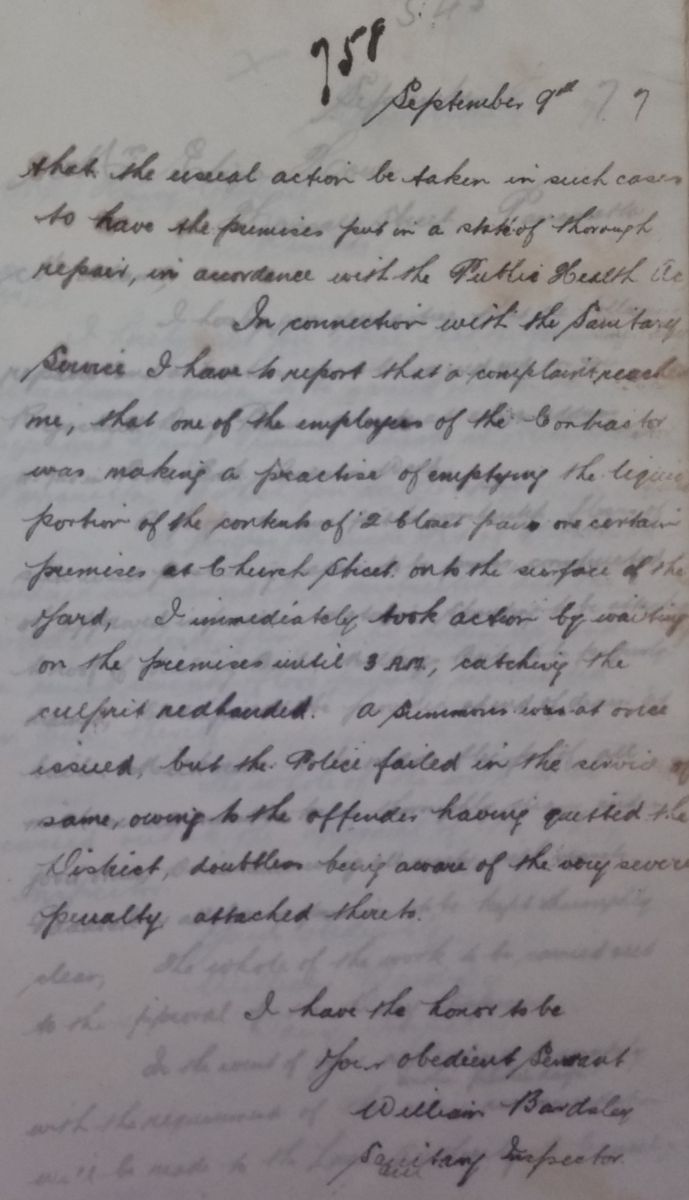
In June of the same year, Assistant Bardsley reported to his supervisor (Mr Artlett) that he had inspected John O’Neill’s registered dairy premises and found the cow yard in a “deplorable” condition writing that “the surface was very much cut up and there were several pools of water intermingled with cow manure and urine laying about giving it a very offensive appearance” (and smell.)
The Assistant Inspector also reported regularly on the number of cases of infectious diseases in the district. In August 1897, there had been two cases of Scarlett Fever and one of Typhoid Fever notified. Bardsley was called upon to inspect the dwelling known as “The Cedars” situated on the Western Road (now the Great Western Highway), which was owned by Sydney Ferries Limited. He found the structure of the building to be dilapidated and decayed declaring the premises “unfit for human habitation.” A notice was issued to the owners, stipulating that the building be put “in a state of thorough repair” according to the Public Health Act.
It seems that the Assistant Inspector William Bardsley was far more attentive to his responsibilities in this important role than the designated Inspector Francis Artlett, who resigned the position in 1897. The Overseer of Works, Mr E J Love again fulfilled the duties of the Inspector on a temporary basis.
Previously serving in Tamworth from 1900, Joseph Parry was appointed to the role of Inspector in August 1903, but by the following July he had resigned - gaining the more comfortable position of clerk at Ryde Municipal Council.
The advertisement for the position of Inspector of Nuisances again attracted over ninety applications. In September 1904 a special sitting of Council was called to resolve the issue resulting in William Cecil Bardsley being appointed as Assistant Inspector. Mr Love continued to serve as the Inspector, although the local newspaper considered that in reality, it may have been the other way around.
By 1907, the role demanded much of the Inspector of Nuisances. The extraordinary list of duties under various NSW Acts of Parliament included “the Sanitary Inspector; the Inspector under the Noxious Trades Act 1902; and Cattle Slaughtering and Diseased Animals and Meat Act 1902; Inspector under the Dairy Supervision Act 1901; Inspector under the Public Health Act 1902 and general Inspector of Nuisances in and for the Municipality of Parramatta.”
William Bardsley was the last in a long line of officers to hold the position of Inspector of Nuisances as by 1910 the old-fashioned term had been transformed into the position of Health Officer or Health Inspector. William Bardsley resigned in June 1917 after many years of service to the Municipality of Parramatta.
![]()
Cathy McHardy, Heritage Archives Research Assistant, 2023.
Select Bibliography
Inspector of Nuisances Letter Book. City of Parramatta Heritage Archives: PRS46.
Inspector of Nuisances Reports. City of Paramatta Heritage Archives: A2022/001.
Municipalities Act 1868 (NSW.)
Nuisances Prevention Act 1875 (NSW.)
Parramatta Municipal Council Minute Books. City of Parramatta Heritage Archives: PRS21.


